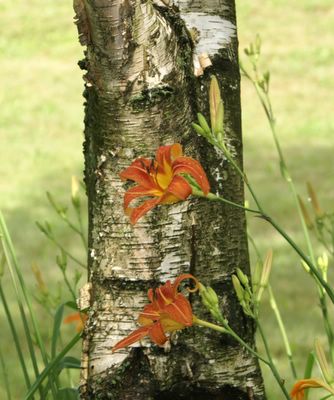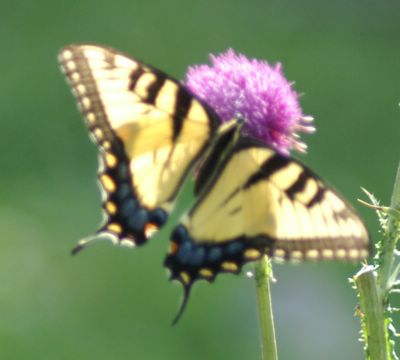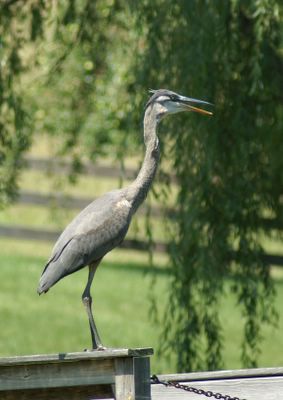Keen's Photos
Wednesday, July 26, 2006
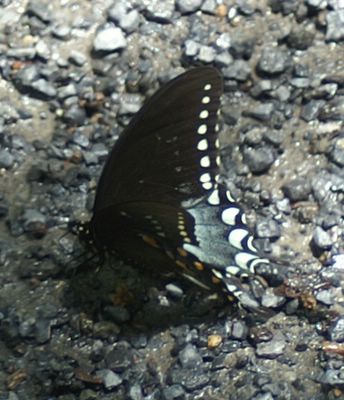
Illustrating the difficulty sometimes encounterred in identifying butterflies, especially on the wing, is this Spicebush Swallowtail. Easy to confuse with dark form female ETS when flitting about, here you see the diffuse area of blue (rather a lighter shade than usually seen on ETS females) on the top of the wings and the double arc of orange spots on the underside.

This is the dark, or black, form of the female Eastern Tiger Swallowtail Butterfly. The strong backlighting here shows the outline of some of the typical black markings of the ETS which are usually not visible against the nearly black color that predominates on the wings. Males do not have this darker form. Like the light form females, the sex is indicated by the abundance of blue markings on the hindwings.

This is a Silver-spotted Skipper. I have seen only one at a time and in two places about three miles apart. Fairly rare here. Typical features of skippers which can be seen here are hooked end antennae and bodies that are larger in relation to wings than is common among true butterflies. They also tend to be rather dull in color and can be mistaken for day flying moths.
Tuesday, July 25, 2006

Here we have a female (the greenish one upper right) and a male (the bright yellow one lower left) American Goldfinch. They are only recently building their nests as they depend on the thistle down from our Canadian Thistles to line their nests. The loss of the thistle flowers is not good news for the butterflies and bees however.
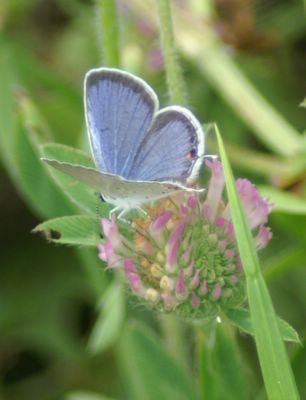
This little fellow is an Eastern Tailed Blue Butterfly which I found in Albany Twp. last Saturday. The underside is a rather dull gray with a few spots, but the upper surfaces are a wonderful blue edged with slate and thin white border. The tiny tail on each hindwing with an orange spot at its base on top and two such on the underside confirm the identification.

Here is another blossom of rhododendron from about a quarter mile west of the previous one shown below. The one is occupied by a pair of unidentified insects doing whatever it is that "birds ... bees ... even educated fleas" do. My thanks to Dr. David Royster of UNC-Charlotte for identifying our local wild Rhododendron as R. Maximus (Great Rhododendron) which is sometimes called Great Laurel in the Appalachians but, as I noted earlier, is not Mountain Laurel. Dr. Royster is a math prof, but he maintains a very nice site for Rhododendrons at http://education.uncc.edu/droyster/gardens.html
